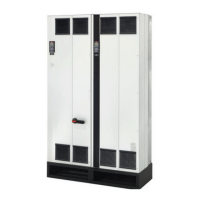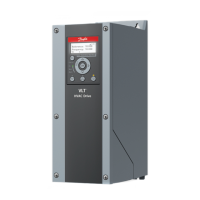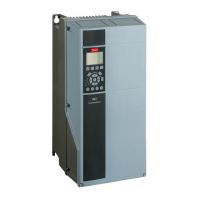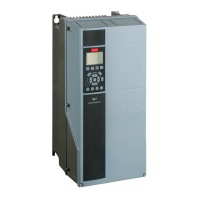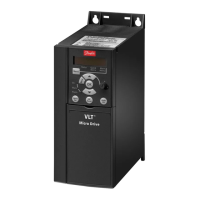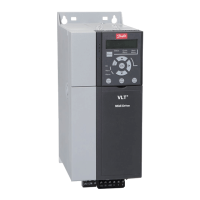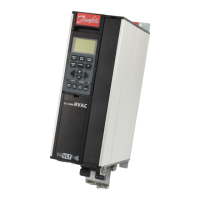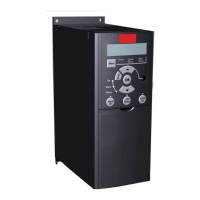2.4 Aggressive Environments
An adjustable frequency drive contains many mechanical
and electronic components. All are to some extent
vulnerable to environmental effects.
CAUTION
The adjustable frequency drive should not be installed in
environments with airborne liquids, particles or gases
capable of affecting and damaging the electronic
components. Failure to take the necessary protective
measures increases the risk of stoppages, thus reducing
the life of the adjustable frequency drive.
Liquids can be carried through the air and condense in the
adjustable frequency drive and may cause corrosion of
components and metal parts. Steam, oil, and salt water
may cause corrosion of components and metal parts. In
such environments, use equipment with enclosure rating
IP54. As an extra protection, coated printed circuit boards
can be ordered as an option. (Standard on some power
sizes.)
Airborne particles such as dust may cause mechanical,
electrical or thermal failure in the adjustable frequency
drive. A typical indicator of excessive levels of airborne
particles is the presence of dust particles around the
adjustable frequency drive fan. In dusty environments, use
equipment with enclosure rating IP54 or a cabinet for
IP20/TYPE 1 equipment.
In environments with high temperatures and humidity,
corrosive gases such as sulphur, nitrogen, and chlorine
compounds causes chemical processes on the adjustable
frequency drive components.
Such chemical reactions rapidly affect and damage the
electronic components. In such environments, mount the
equipment in a cabinet with fresh air ventilation, keeping
aggressive gases away from the adjustable frequency drive.
An extra protection in such areas is a coating of the
printed circuit boards, which can be ordered as an option.
NOTICE!
Mounting adjustable frequency drives in aggressive
environments increases the risk of stoppages and consid-
erably reduces the life of the adjustable frequency drive.
Before installing the adjustable frequency drive, check the
ambient air for liquids, particles and gases. This is done by
observing existing installations in this environment. Typical
indicators of harmful airborne liquids are water or oil on
metal parts, or corrosion of metal parts.
Excessive dust particle levels are often found on instal-
lation cabinets and existing electrical installations. One
indicator of aggressive airborne gases is the blackening of
copper rails and cable ends on existing installations.
2.5 Vibration and Shock
The adjustable frequency drive has been tested according
to the procedure based on the shown standards, Table 2.2
The adjustable frequency drive complies with requirements
that exist for units mounted on the walls and floors of
production premises, as well as in panels bolted to walls or
floors.
IEC/EN 60068-2-6 Vibration (sinusoidal) - 1970
IEC/EN 60068-2-64 Vibration, broad-band random
Table 2.2 Standards
2.6
Advantages
2.6.1 Why use an adjustable frequency
drive for controlling fans and pumps?
An adjustable frequency drive takes advantage of the fact
that centrifugal fans and pumps follow the laws of propor-
tionality for such fans and pumps. For further information,
see chapter 2.6.3 Example of Energy Savings.
2.6.2
The Clear Advantage - Energy Savings
The clear advantage of using an adjustable frequency drive
for controlling the speed of fans or pumps lies in the
electricity savings.
When comparing with alternative control systems and
technologies, an adjustable frequency drive is the optimum
energy control system for controlling fan and pump
systems.
Product Overview
Design Guide
12 Danfoss A/S © Rev. 2014-01-14 All rights reserved. MG18C522
22

